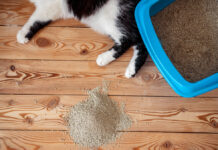Does your small furry friend love to chew? Finding safe bones for small dogs can be tricky, but it’s crucial for their health and happiness As a dedicated pet parent, you want to ensure your tiny companion can enjoy chewing without risking their safety. Let’s explore the best and safest bone options for your small dog.
Understanding Why Dogs Need to Chew
Dogs have a natural instinct to chew – it’s in their DNA. This behavior isn’t just about entertainment; it serves multiple purposes for our four-legged friends If you’re interested in learning more about dog behavior and care, check out our comprehensive dog care guide.
Best Safe Bones for Small Dogs: Top Picks
1. Raw Bones
- Chicken necks
- Duck necks
- Small lamb ribs
- Raw marrow bones (supervised only)
2. Manufactured Chews
- Nylon bones
- Rubber bones
- Dental chews
Safety First: What to Look For
When selecting safe bones for small dogs, consider these factors:
-
Size Matters
- Choose bones larger than your dog’s muzzle
- Avoid bones that can fit entirely in their mouth
-
Texture
- Not too hard
- Should give slightly when pressed
- No sharp edges
Bones to Avoid
Stay away from:- Cooked bones (especially chicken)- Weight-bearing bones from large animals- Antlers- Pork bones
Tips for Safe Chewing
-
Supervision is Key
- Always watch your pup while they chew
- Remove bones when they become small enough to swallow
-
Fresh is Best
- Replace bones regularly
- Clean thoroughly between uses
The Benefits of Safe Chewing
As highlighted by Pet like boss, proper chewing can:- Reduce anxiety- Clean teeth naturally- Provide mental stimulation- Strengthen jaw muscles
How to Introduce New Bones
-
Start Slow
- Introduce one type at a time
- Monitor your dog’s reaction
- Limit chewing time initially
-
Watch for Signs
- Aggressive chewing
- Disinterest
- Digestive issues
Making the Right Choice for Your Small Dog
Every dog is different, so what works for one might not work for another. When choosing safe bones for small dogs, consider:
-
Age
- Puppies need softer options
- Senior dogs may need gentler choices
-
Chewing Style
- Aggressive chewers need durable options
- Gentle chewers can handle softer bones
-
Size
- Match the bone size to your dog’s mouth
- Err on the larger side for safety
Maintaining Bone Safety
-
Regular Checks
- Inspect bones for wear
- Look for splintering
- Clean after each use
-
Storage
- Keep raw bones refrigerated
- Store dry bones in a clean container
- Replace when worn
Common Mistakes to Avoid
-
Size Mismatches
- Don’t give large dog bones to small dogs
- Avoid bones that are too small
-
Poor Supervision
- Never leave dogs alone with bones
- Watch for aggressive chewing
Special Considerations
-
Dental Health
- Some bones are better for teeth cleaning
- Consider dental-specific chews
-
Dietary Restrictions
- Check with your vet about raw bones
- Consider alternatives if needed
Expert Tips
-
Rotation System
- Alternate between different safe bones
- Keep multiple options available
-
Temperature Matters
- Never give frozen bones
- Avoid bones left in sun
Making the Most of Chew Time
-
Training Opportunities
- Use bones as rewards
- Teach “drop it” command
-
Enrichment Activities
- Hide bones for searching
- Use as puzzle toy fillers
When to Consult a Vet
Seek professional advice if:- Your dog shows digestive issues- There’s excessive wear on teeth- You notice changes in chewing behavior
Finding safe bones for small dogs doesn’t have to be overwhelming. With proper knowledge and careful selection, you can provide your tiny friend with safe, enjoyable chewing options. Remember to always prioritize safety, supervise chewing sessions, and consult with your vet when in doubt.
FAQs
-
How often should I give my small dog bones?
- Depends on individual needs
- Usually 2-3 times per week
-
Can small dogs have raw bones?
- Yes, with proper supervision
- Size-appropriate choices only
-
How long should chewing sessions last?
- 10-15 minutes recommended
- Monitor for fatigue
-
What signs indicate the bone needs replacing?
- Visible wear
- Small enough to swallow
- Splintering
-
Are antlers safe for small dogs?
- Generally not recommended
- Too hard for small jaws
Remember, happy chewing leads to happy pups! Keep these guidelines in mind, and you’ll be well on your way to providing safe and enjoyable chewing experiences for your small dog.












